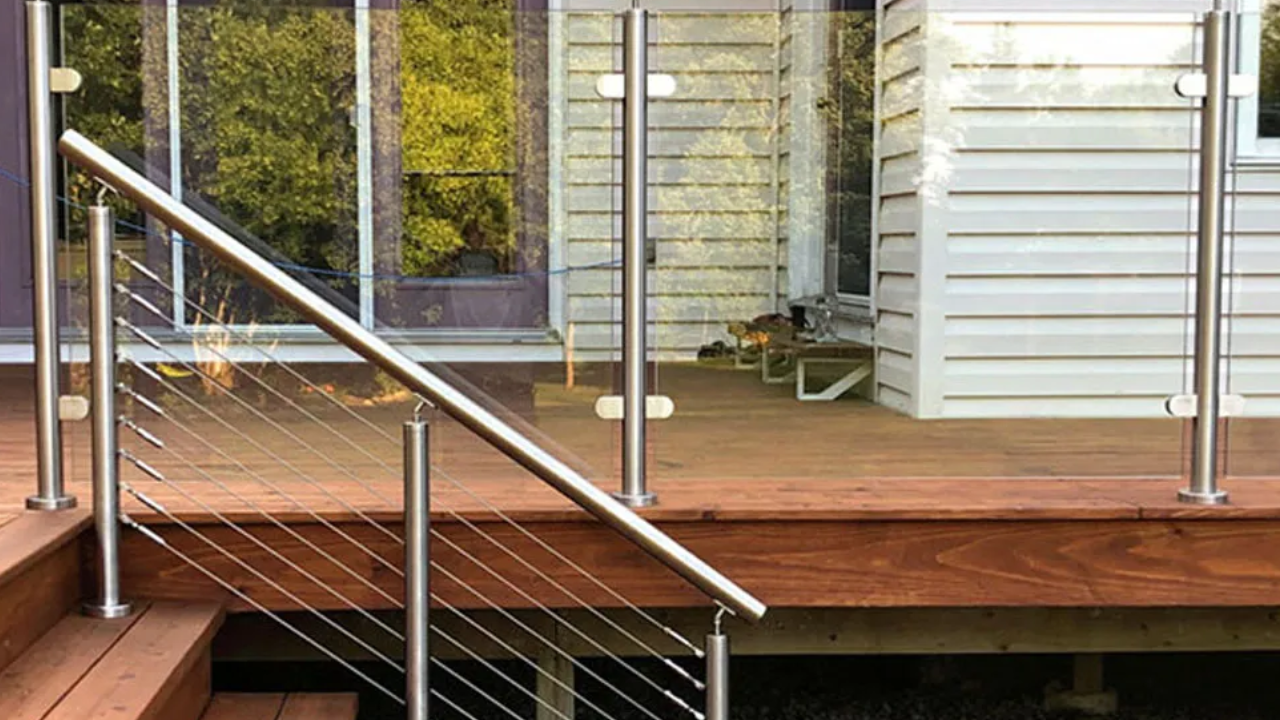Glass railing designs provide balconies with a clean, contemporary look and unhindered views. They have safety-approved tempered or laminated glass panels, frequently in unframed or sparsely framed designs. Top, side, or channel mounting are available mounting choices that blend well with a variety of architectural designs.
Glass railings offer wind protection while striking a balance between seclusion and openness. They come in clear, tinted, or frosted finishes. A glass railing design is durable and safe since it adheres to strict building requirements regarding load-bearing and height. They require routine cleaning and inspections for maintenance, which makes them a practical yet sophisticated option for modern outdoor areas.
Safety Standards of Glass Railing Design
Whilst designing a tumbler railing for a balcony, adherence to safety requirements and building codes is crucial for ensuring safety, functionality, and prison compliance. Here’s a complete manual to the key safety requirements and building codes that cup railing designs must observe:
Height Necessities
The height of the railing is critical for preventing falls and ensuring consumer protection. Usually, the minimal height for residential balcony railings is 36 inches (ninety-one cm) inside the U.S., even though some areas require 42 inches (107 cm). For industrial homes, the same old peak is often forty-two inches (107 cm). Continually test neighborhood building codes, as specific requirements can vary through jurisdiction.
Load-Bearing Capacity
Glass railings need to face up to precise forces to ensure they can appropriately bear the masses imposed by customers and environmental conditions. Railings have to face up to a horizontal load of a minimum of two hundred pounds (89 kg) according to linear foot, as consistent with the International Constructing Code (IBC). Posts and rails need to additionally meet load-bearing requirements, making sure the overall balance of the railing device.
Glass Type and Thickness
The kind and thickness of the glass affect the protection and sturdiness of the railing. Required in most programs for its energy and safety traits. It shatters into small, much less dangerous pieces. Regularly utilized in regions where additional protection is needed. It includes two or more layers of glass bonded with a plastic interlayer, retaining the glass together if broken.
Railing Systems and Set-up Strategies
The structural integrity and protection of the railing are encouraged by the installation technique and the system's standard design. Options include top-installed, aspect-set-up, or embedded in channels. Each method needs to meet particular load and structural requirements. Proper anchoring to the balcony structure is crucial for balance. Fasteners and anchors ought to be corrosion-resistant and able to withstand environmental pressure.
Environmental Issues
Environmental elements inclusive of wind, seismic interest, and temperature adjustments affect the overall performance of glass railings. Glass railings in high-wind areas must meet local wind load requirements. This will involve thicker glass or additional structural help. In seismic zones, railings should observe additional requirements to resist earthquake forces.
Safety Capabilities and Protection
Ordinary renovation and safety capabilities enhance the durability and protection of the railing system. Uncovered edges of glass panels should be polished or treated to reduce the hazard of damage. Normal inspections and preservation assessments are required to ensure that the railing remains comfortable and loose from damage.
Accessibility Necessities
Ensuring that the railing design is offered and secure for all users, inclusive of people with disabilities. In some jurisdictions, glass railings ought to consist of a handrail at a specific top, generally 34 to 38 inches (86 to ninety-seven cm) above the balcony floor. Continually confirm with nearby construction authorities to make certain compliance with nearby variations in construction codes.
Concluding Remarks
Compliance with protection standards and constructing codes for glass railing design is vital for ensuring safety, functionality, and prison adherence. Key concerns include top necessities, load-bearing capability, glass type, and thickness, installation techniques, spacing necessities, environmental elements, renovation protocols, and accessibility requirements. With the aid of very well understanding and making use of these policies, you may gain a secure, attractive, and compliant glass railing machine on your balcony.


